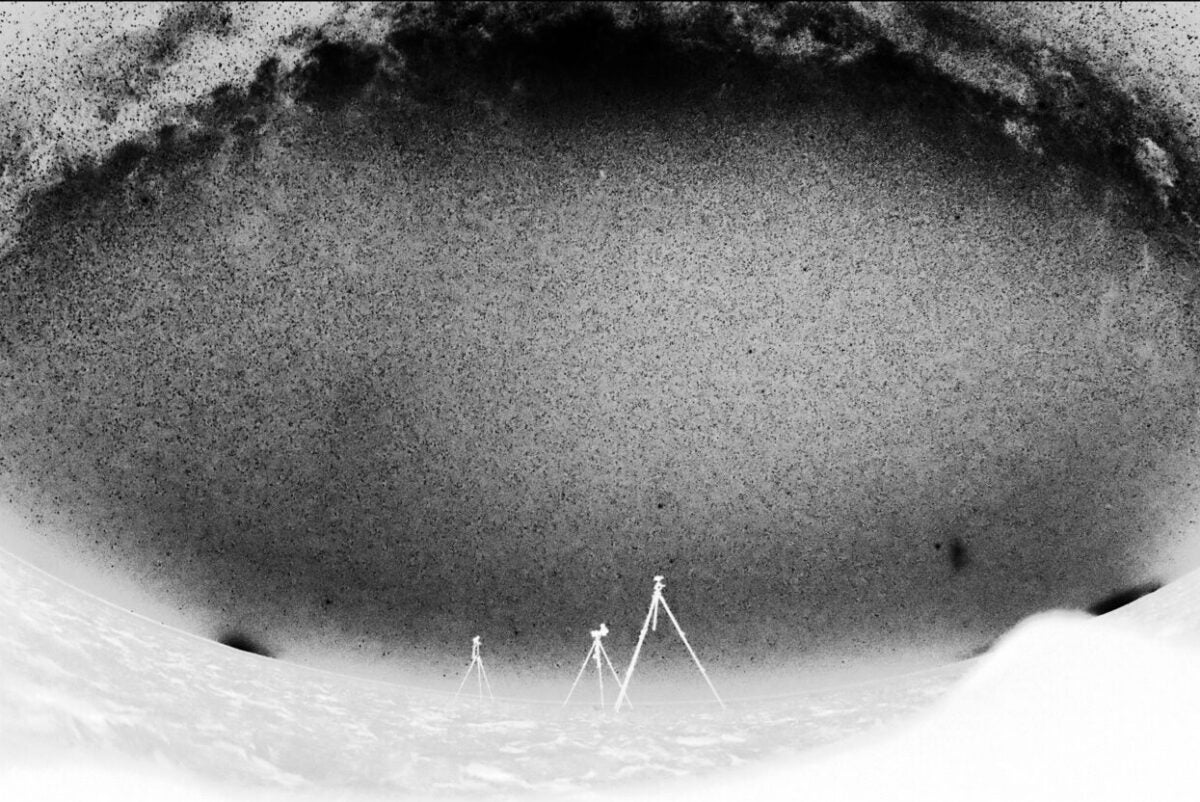
The gegenschein rests at the tip of the dimmer pyramidal-shaped false zodiacal light. Credit: Stephen James O’Meara
In April 1961, Galaxy magazine contained an article entitled “The Puzzle Called Gegenschein,” by German-American science writer Willy Ley. Referring to the mystery of who was the first to identify the faint glow of the gegenschein, Ley wrote: “Historians of astronomy are in fair agreement that the first discoverer of the Gegenschein was the Danish astronomer Theodor Brorsen [in 1854] … but Brorsen himself stated that he was not the first to see it.”
Brorsen credited French astronomer Esprit Pézenas as having seen it in 1730. But in 2021, Donald Olson, an astronomer at Texas State University, determined that what Pézenas took for the gegenschein (which he described as red) was instead an aspect of a great auroral display that occurred Feb. 15, 1730.
In the January 2024 issue of Journal of the British Astronomical Association, Marinus A. van der Sluijs argues that U.S. Navy chaplain George Jones (1800–1870) appears to have observed the gegenschein a couple of months prior to Brorsen. On the morning of Jan. 30, 1854, Jones observed what he called a diffuse “Zodiacal Light” slightly east of Regulus (in the region of the antisolar point) at 2:00 a.m., which he followed for another three hours. About two weeks later, he said it appeared like a “dim branch of the Milky Way, that has strayed off from the general course.”
Unfortunately, in all this discussion, the man who decades earlier gave the gegenschein its name has been overlooked, though I argue this is a mistake. I’ll explain.
What is the gegenschien?
Gegenschein is a German word meaning “counterglow,” and refers to a faint oval glow. About 10° across at its largest, it would fit comfortably inside the bowl of the Big Dipper. It appears at a position directly opposite, or counter to, the Sun on the ecliptic — the pathway of the Sun, marked by the zodiacal constellations.
The gegenschein is a part of the same complex of dimly shining features that includes the zodiacal light and the much fainter zodiacal band. The minuscule particles orbiting the Sun form a dust disk on the ecliptic plane, and light reflecting off it creates all these phenomena. While the dust cloud’s origin is still being debated, observations from NASA’s Juno spacecraft reveal that dust storms on Mars may be the source of the dust disk, which lies between the orbits of Earth and Mars.
Of these phenomena, the zodiacal light is the most intense. It is a diffuse cone of light (often described as a pyramid) seen in the western sky in the evening. It first appears around the end of astronomical twilight and sets about two hours later; the cone’s tip then reappears as it begins to rise about two hours before sunrise, and appears highest just before dawn.
In his book Cosmos (Vol. 1), German scientific explorer and naturalist Alexander von Humboldt recorded that on the night of March 16, 1803, when the zodiacal light was “most strongly luminous,” he observed a pyramidal counterglow — gegenschein, in his native language — in the east. Although the name survived, scholars have generally discredited Humboldt’s observations, believing that what he described as an eastern zodiacal pyramid was actually an atmospheric phenomenon called the false zodiacal light.
But would Humboldt really have been fooled? The false zodiacal light is visually much dimmer than the appearance of the rising gegenschein. And, as E.R. Hope of Canada’s Defence Research Board explained in the Nov. 25, 1961, issue of Nature, the false zodiacal light is an atmospheric effect that “opens out” from the gegenschein toward the horizon, creating this pyramid.
My observations of the false zodiacal light made on Aug. 8, 2023, from the extremely flat Makgadikgadi Pans in Botswana, confirmed these attributes. On that night, I first spotted the gegenschein rising in the east at the end of astronomical twilight. Only after determining the location of the gegenschein against the stars did I notice the much dimmer skirt of the false zodiacal light trailing down from the horizon. So yes, there was a pyramid of light in the east — just as Humboldt reported. The gegenschein formed its tip and was also the most prominent part. In other words, I would not have noticed the false pyramid had it not been for the presence of the gegenschein.
So, who discovered the gegenschein? I’ll go out on a limb and say that not only did Alexander von Humboldt discover and name the phenomenon in March 1803, but he was also the first to discover the false zodiacal light as well. And Brorsen was the first to give a detailed description. As always, thoughts and observations are welcome at sjomeara31@gmail.com.

